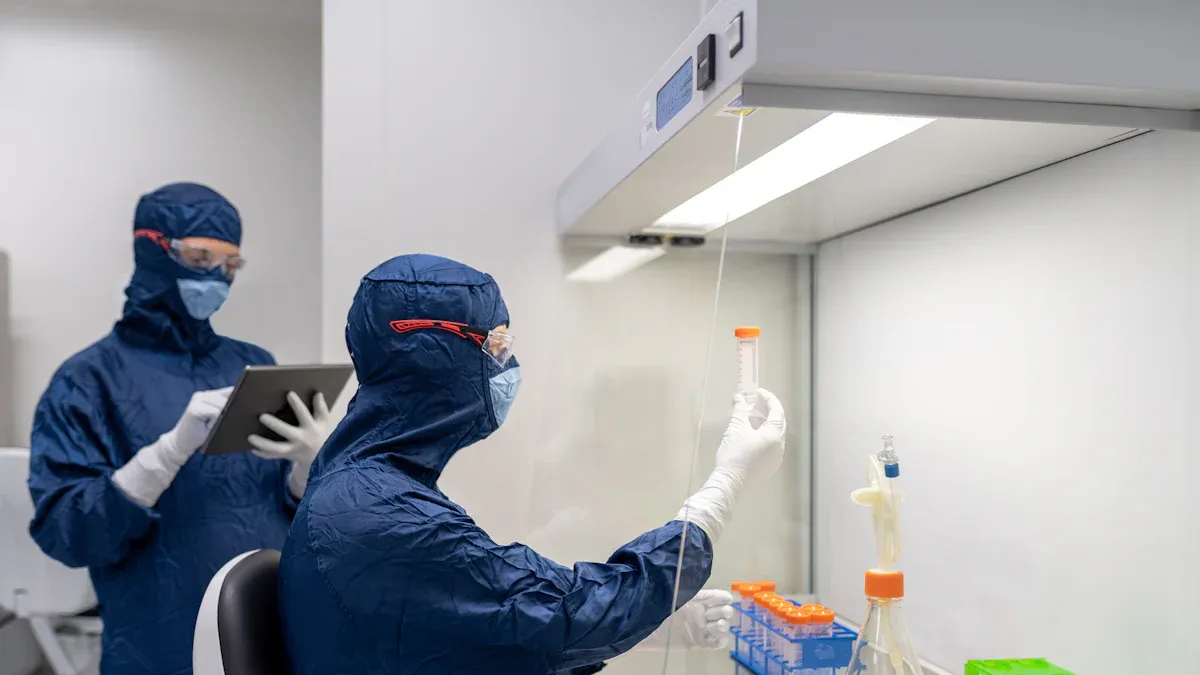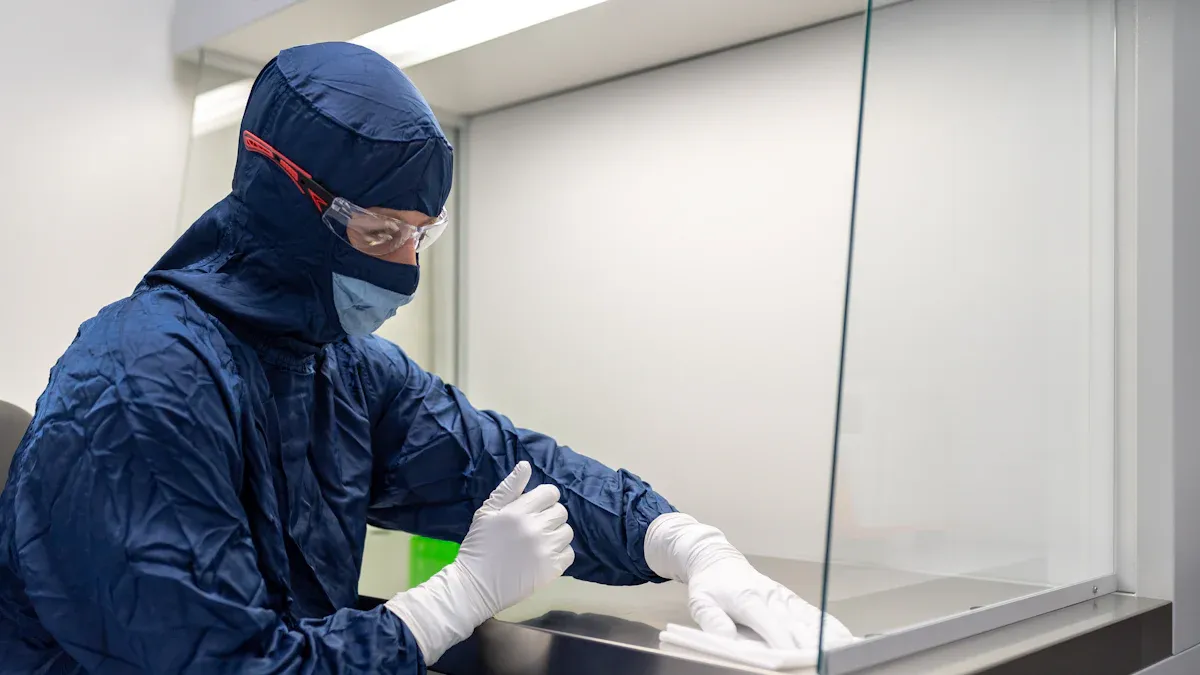
A telephone for the clean room allows workers to talk with each other while staying inside the controlled space. This system helps them avoid opening doors or leaving the area. Staff can keep their hands free and focus on their important tasks without risking contamination.
Challenges of Communication in Clean Rooms

Contamination Risks from Standard Devices
Standard phones and communication devices can bring germs and particles into clean rooms. Workers who touch these devices may spread contaminants without knowing it. Even a small amount of dust or bacteria can ruin sensitive experiments or products. Clean rooms need strict controls to keep the air and surfaces free from unwanted materials. Using regular phones in these spaces increases the risk of contamination.
Note: Clean rooms often require special equipment to prevent the spread of particles and microbes.
Hands-Free and Easy-to-Clean Requirements
People working in clean rooms often wear gloves and protective suits. They cannot use regular phones easily. Devices must allow hands-free operation so workers can talk without removing their gloves. Phones also need smooth surfaces. This design makes cleaning and disinfecting much easier. Workers can wipe down the device quickly, which helps keep the area sterile.
- Hands-free features help workers stay focused on their tasks.
- Easy-to-clean surfaces reduce the time needed for cleaning.
Environmental and Regulatory Demands
Clean rooms must meet strict rules set by health and safety agencies. These rules cover everything from air quality to equipment design. Devices must resist harsh cleaning chemicals and moisture. They also need to work well in different temperatures and humidity levels. If a device fails to meet these standards, it can put the whole operation at risk. Choosing the right communication tools helps companies follow the rules and protect their products.
Telephone for the Clean Room: Features and Solutions
Sealed and Smooth Surfaces for Disinfection
A telephone for the clean room must have a design that supports easy cleaning. Manufacturers use sealed and smooth surfaces so workers can wipe down the device quickly. No cracks or crevices trap dust or germs. This feature helps keep the environment sterile. Workers often use disinfectants on these surfaces. A smooth finish allows the cleaning process to remove all particles.
Tip: Choose devices with minimal buttons and flat panels for the best cleaning results.
Chemical and Moisture Resistance
Clean rooms use strong cleaning agents and sometimes have high humidity. A telephone for the clean room needs to resist both chemicals and moisture. Special materials protect the device from damage. Seals around buttons and ports keep liquids out. This protection ensures the phone works well even after repeated cleaning.
| Feature | Benefit |
|---|---|
| Chemical resistance | Prevents damage from cleaners |
| Moisture resistance | Stops water from entering |
Hands-Free and Voice-Activated Operation
Workers in clean rooms often wear gloves and cannot touch devices easily. Hands-free and voice-activated features help them communicate without using their hands. A telephone for the clean room may include speakerphone options or voice commands. These features let workers talk while focusing on their tasks. They do not need to remove gloves or stop what they are doing.
- Voice activation reduces the need for physical contact.
- Hands-free operation increases safety and efficiency.
Antimicrobial Materials and Construction
Some telephones for the clean room use antimicrobial materials. These materials stop bacteria and other microbes from growing on the device. Manufacturers add special coatings or use plastics that fight germs. This extra layer of protection helps keep the clean room safe. Workers can trust that the device will not become a source of contamination.
Note: Antimicrobial construction does not replace regular cleaning but adds another level of safety.
Telephone vs. Intercom: Choosing the Right System
Clean rooms can use either telephones or intercoms for communication. Each system has benefits. A telephone for the clean room allows private calls and can connect to outside lines. Intercoms work well for quick messages within the same area. The choice depends on the needs of the facility.
Comparison Table:
| System | Best Use Case | Privacy | Connection Type |
|---|---|---|---|
| Telephone | External and private calls | High | Internal/External |
| Intercom | Quick, local announcements | Low | Internal only |
Real-World Examples of Clean Room Communication
Many industries use a telephone for the clean room to support safe communication. In pharmaceutical labs, workers use these phones to report results without leaving the sterile area. Electronics factories rely on hands-free phones to coordinate production steps. Hospitals use clean room telephones in operating rooms to call for supplies or help. These examples show how the right device keeps operations smooth and safe.
Real-world use proves that specialized telephones help maintain strict clean room standards.
- Telephone for the clean room solutions help staff keep clean rooms safe and efficient.
- These devices support sterility, easy use, and rule compliance.
Choosing the right system lets teams work without risking contamination or delays.

